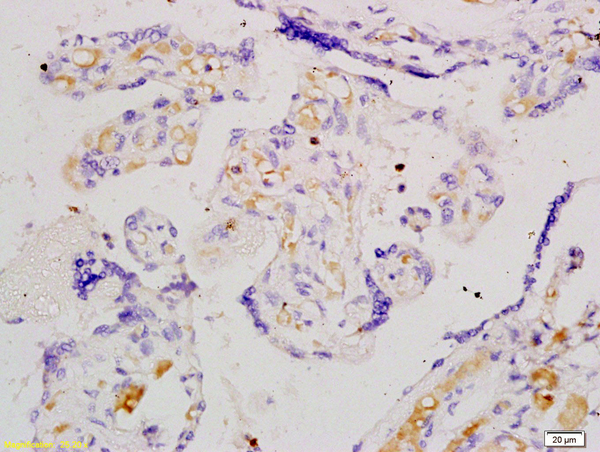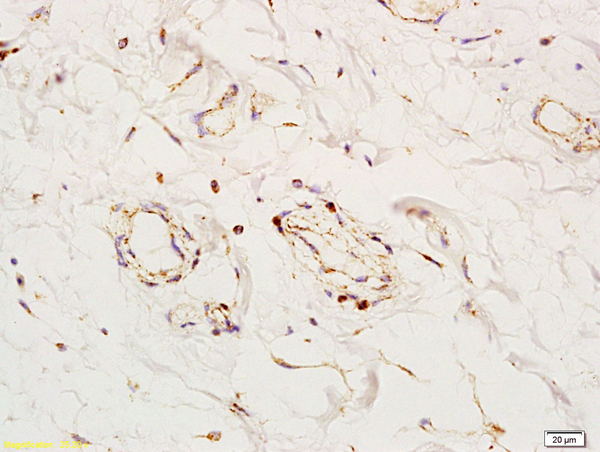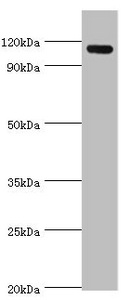
Formalin-fixed and paraffin embedded human placenta tissue labeled with Anti-Angiomotin Polyclonal Antibody, Unconjugated (bs-4171R) at 1:200 followed by conjugation to the secondary antibody and DAB staining
Angiomotin Polyclonal Antibody
BS-4171R
ApplicationsImmunoFluorescence, Western Blot, ELISA, ImmunoCytoChemistry, ImmunoHistoChemistry, ImmunoHistoChemistry Frozen, ImmunoHistoChemistry Paraffin
Product group Antibodies
TargetAMOT
Overview
- SupplierBioss
- Product NameAngiomotin Polyclonal Antibody
- Delivery Days Customer16
- ApplicationsImmunoFluorescence, Western Blot, ELISA, ImmunoCytoChemistry, ImmunoHistoChemistry, ImmunoHistoChemistry Frozen, ImmunoHistoChemistry Paraffin
- Applications SupplierWB(1:300-5000), ELISA(1:500-1000), IHC-P(1:200-400), IHC-F(1:100-500), IF(IHC-P)(1:50-200), IF(IHC-F)(1:50-200), IF(ICC)(1:50-200)
- CertificationResearch Use Only
- ClonalityPolyclonal
- Concentration1 ug/ul
- ConjugateUnconjugated
- Gene ID154796
- Target nameAMOT
- Target descriptionangiomotin
- Target synonymsangiomotin
- HostRabbit
- IsotypeIgG
- Protein IDQ4VCS5
- Protein NameAngiomotin
- Storage Instruction-20°C
- UNSPSC12352203
References
- Shimada H, Abe S, Kohno T, et al. Loss of tricellular tight junction protein LSR promotes cell invasion and migration via upregulation of TEAD1/AREG in human endometrial cancer. Sci Rep. 2017,7:37049. doi: 10.1038/srep37049Read this paper






